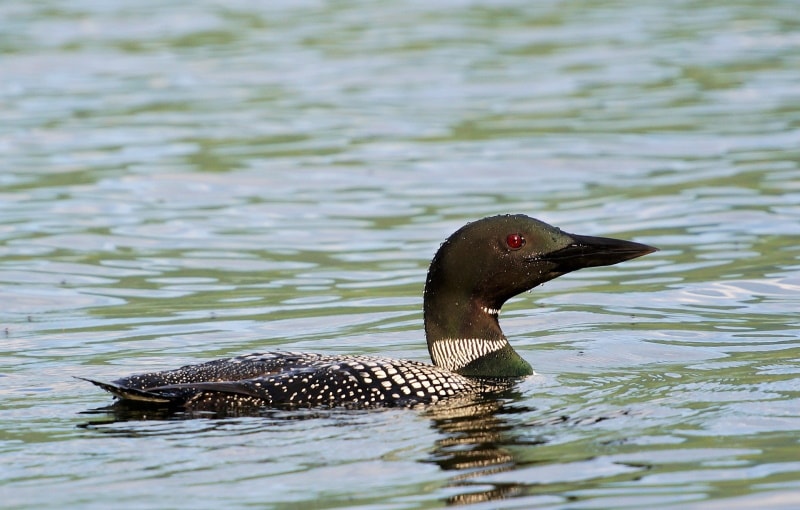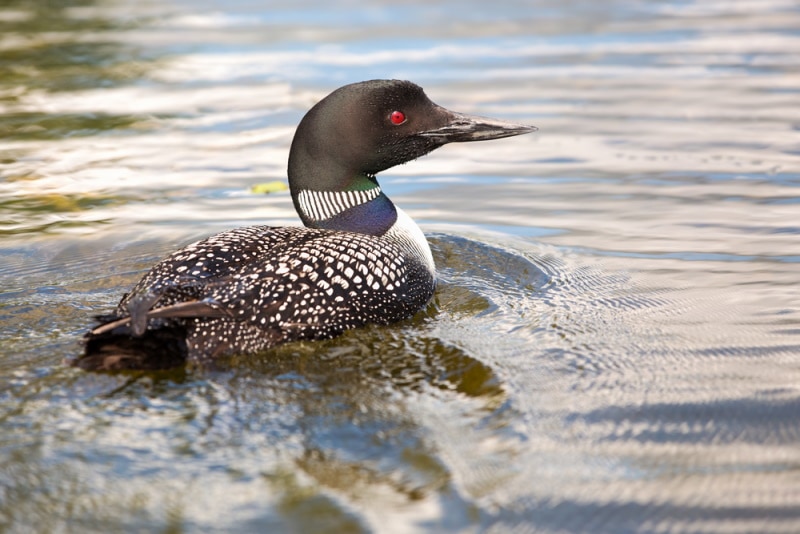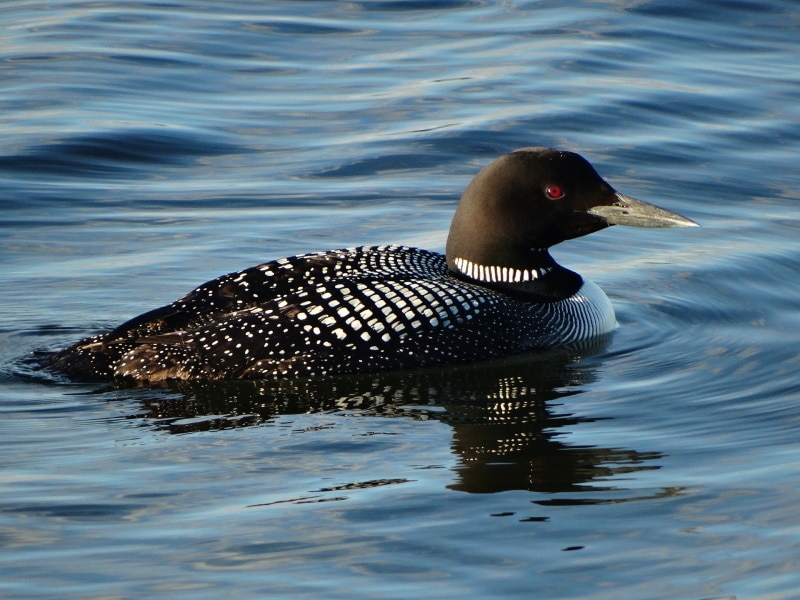How Long Can a Loon Stay Underwater? The Surprising Answer!
Last Updated on

Even though they’re called Common Loons, their behavior is anything but common. These birds are known for their average, unassuming appearance, but certain facts about the Common Loon will leave you in awe. For example, did you know these birds are incredibly agile swimmers?
More importantly, they’re able to stay underwater, and it’s only natural to wonder what their underwater limit is. The short answer is that loons can stay underwater for five minutes, but the long answer is much more interesting.
Their ability to stay underwater helps them in hunting for food and avoid predators at the same time. The longer and deeper they can dive underwater, the better the chances of finding fish for food.
Keep reading to explore the underwater capabilities of a Common Loon and everything else about them that you probably never knew.

Can Common Loons Swim?
Loons are primarily aquatic birds. They only come ashore every once in a while to mate and lay eggs. Since their legs are positioned very far back on their body, their movement on the land is quite awkward, but they’re expert swimmers.
Common migrating Loons often land on wet roads or parking lots and mistake shallow water for lakes and rivers. Since they’re tired after a long flight without access to much open water, a Loon could potentially get stuck on a small pond. Loons are adept swimmers, but they are also relatively swift flyers.

How Long Can a Common Loon Stay Underwater?
Common Loons are also known as the Great Northern Divers because of their incredible diving capabilities. For this reason, they have learned to stay underwater for a long time during their deep dives. On average, Loons can stay underwater for over 5 minutes.
In some cases, they may even remain submerged for up to 10–12 minutes. This skill allows them to dive deeper than 200 meters underwater to forage for fish. In addition, it helps to steer clear of common predators like Herons and Eagles.
How Do They Stay Underwater?
Common loons have solid bones, unlike many other birds with hollow bones to prevent drowning. Their solid bones add weight to their body and allow them to dive deeper at a fast speed without exerting excessive pressure. In addition, the extra weight prevents their body from constantly surfacing on the water, like in some other birds’ cases.
While underwater, they use their webbed feet to swim expertly and glide above the surface of the water. They also use their signature red eyes to locate their prey while underwater.
These birds can dive into both calm lakes and raging oceans alike with the help of their string wings and paddles. They have expandable air sacs in their chest that gather oxygen before they dive, allowing them to swim underwater for an extended period without losing consciousness. The more air they can store in the air sacs, the deeper and longer the loons can dive.

About Diving Birds
It may seem like birds aren’t equipped to survive underwater, but various bird families have evolved to deep dive to forage for fish and other aquatic prey. Birds that can stay underwater are known as diving birds, most of which can stay submerged for up to 15 minutes.
Ducks, swans, cormorants, loons, pelicans, penguins, puffins, coots, grebes, and geese are a few well-known diving birds. Most of these birds aren’t experts in flying, but their special adaptations allow them to explore streams, lakes, and rivers.
To stay underwater for 10 minutes, these birds breathe deeply for 2–3 minutes before diving. This allows them to hold their breath while they look for prey and hide from predators underwater.
While some of these birds enter the water from flight, others dive from the water’s surface. Most diving birds evolved from birds that were already adapted for swimming, having adaptations like webbed or lobed feet.

Do Common Loons Bathe Underwater?
You’ll often find a Common Loon bathing to clean its feathers or remove feather lice and other parasites. Typically, they’ll vigorously splash and submerge in the water, which can seem quite surprising if you’re unfamiliar with their behavior.
Their bathing behaviors involve rolling over and thrashing around with partially open wings or diving back into the water. Often, they may flail one or both of their legs and wings in the air to shake off water or slap the water’s surface with their wings.

Final Thoughts
The Common Loon is an unassuming bird, which is why its behavior can seem pretty surprising and impressive. Aside from having no predators, this bird is also known for its incredible swimming skills, which allow it to stay underwater for over five minutes at a time.
Featured Image Credit: Jody Parks, Pixabay
About the Author Jeff Weishaupt
Jeff is a tech professional by day, writer, and amateur photographer by night. He's had the privilege of leading software teams for startups to the Fortune 100 over the past two decades. He currently works in the data privacy space. Jeff's amateur photography interests started in 2008 when he got his first DSLR camera, the Canon Rebel. Since then, he's taken tens of thousands of photos. His favorite handheld camera these days is his Google Pixel 6 XL. He loves taking photos of nature and his kids. In 2016, he bought his first drone, the Mavic Pro. Taking photos from the air is an amazing perspective, and he loves to take his drone while traveling.
Related Articles:
Can You Use Binoculars to Look At Stars? How to Choose the Right Pair
10 Types of Hummingbirds in Arkansas (With Pictures)
8 Types of Hummingbirds in Nebraska (With Pictures)
5 Types of Hummingbirds in Idaho (With Pictures)
3 Types of Hummingbirds in Mississippi (With Pictures)
8 Types of Hummingbirds in Kansas (With Pictures)
5 Types of Hummingbirds in West Virginia (With Pictures)
5 Types of Hummingbirds in Ohio (With Pictures)
